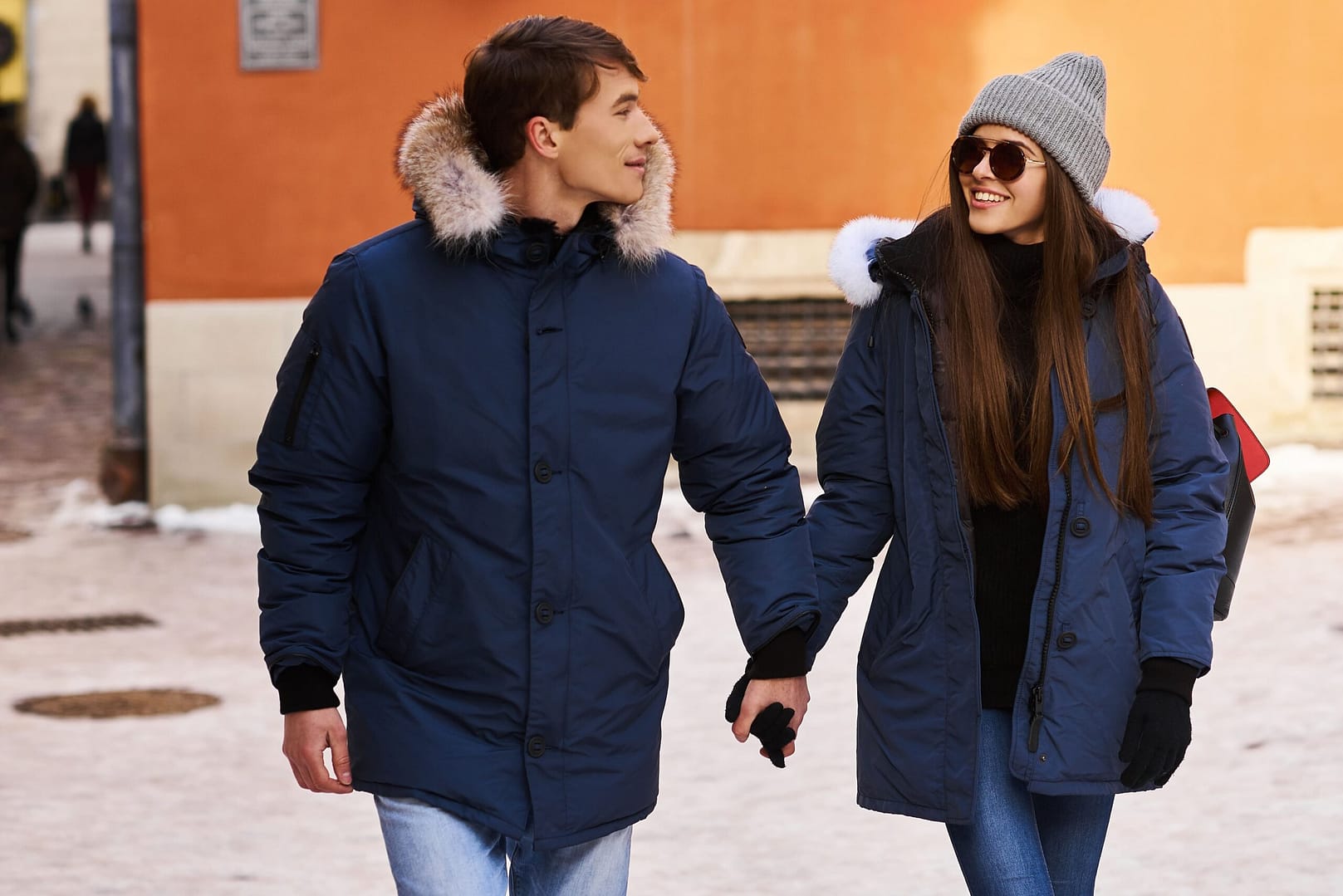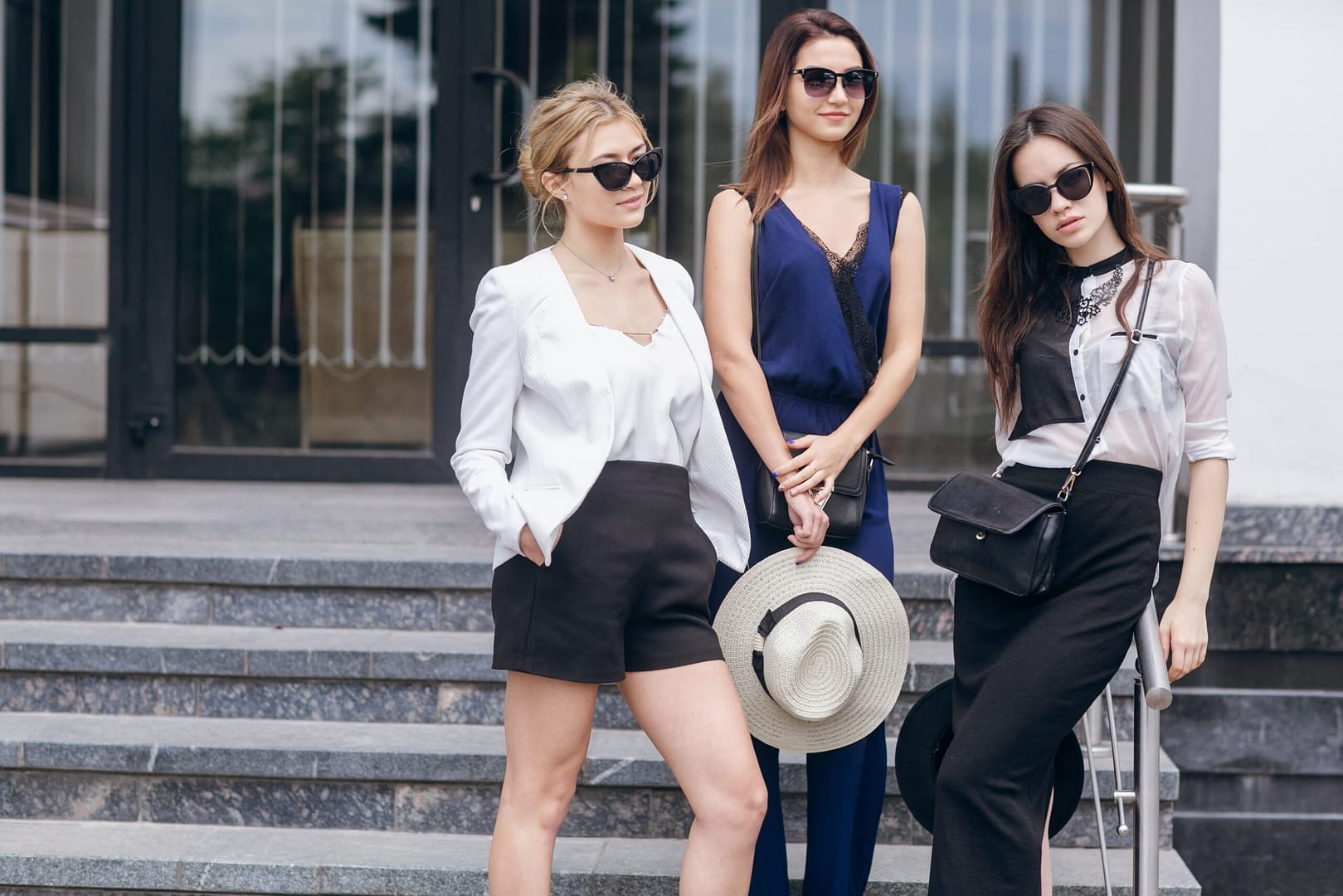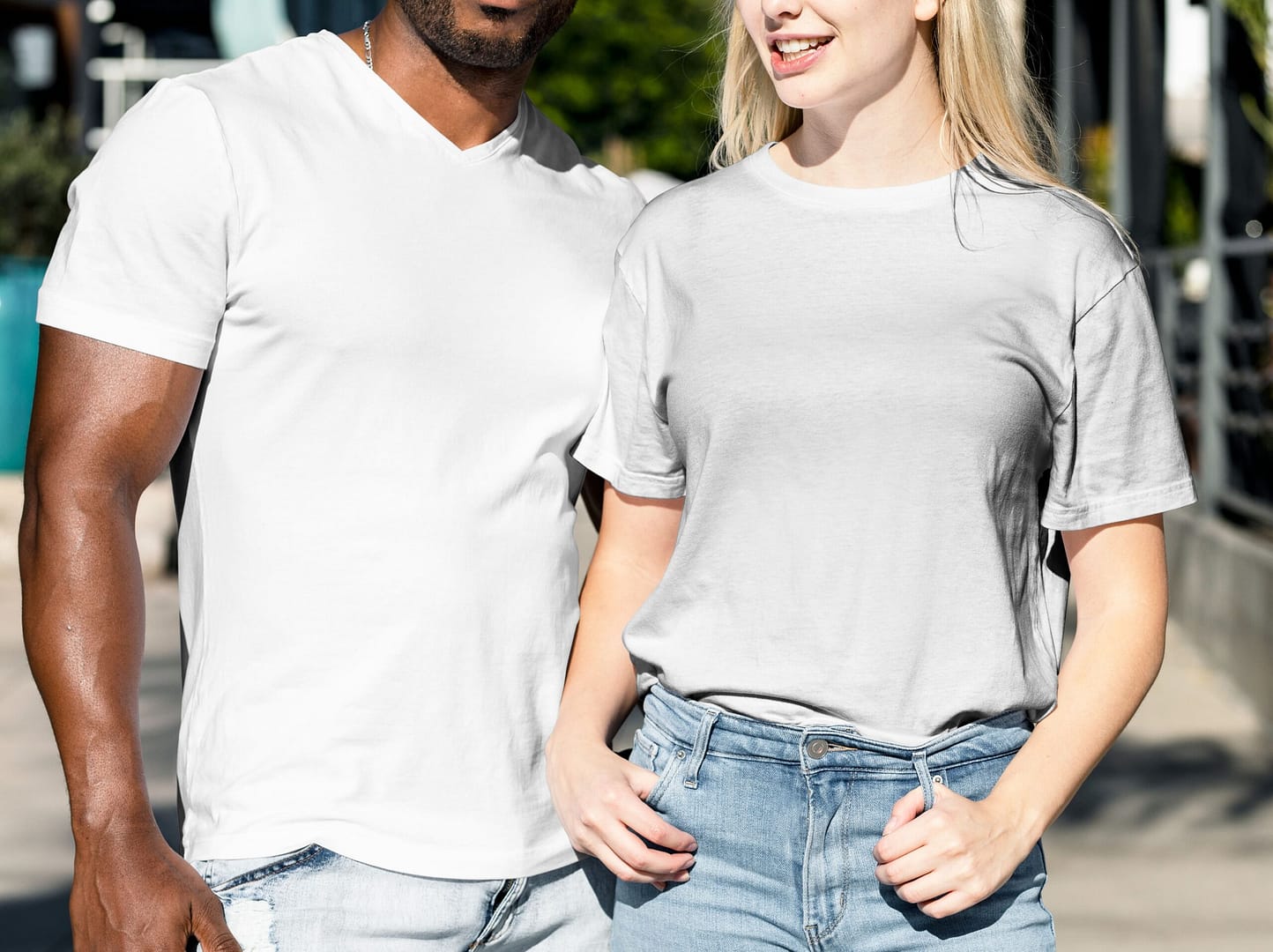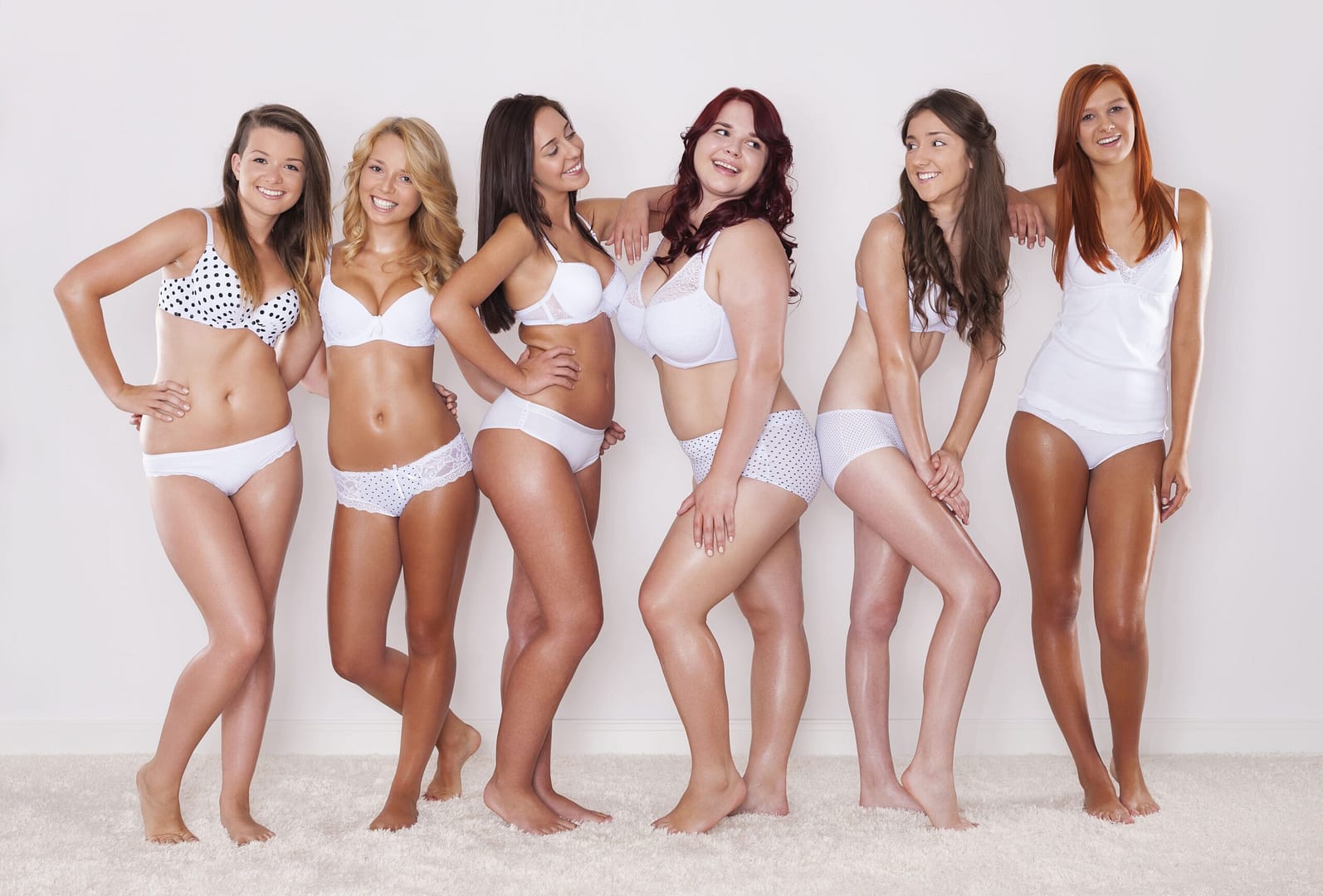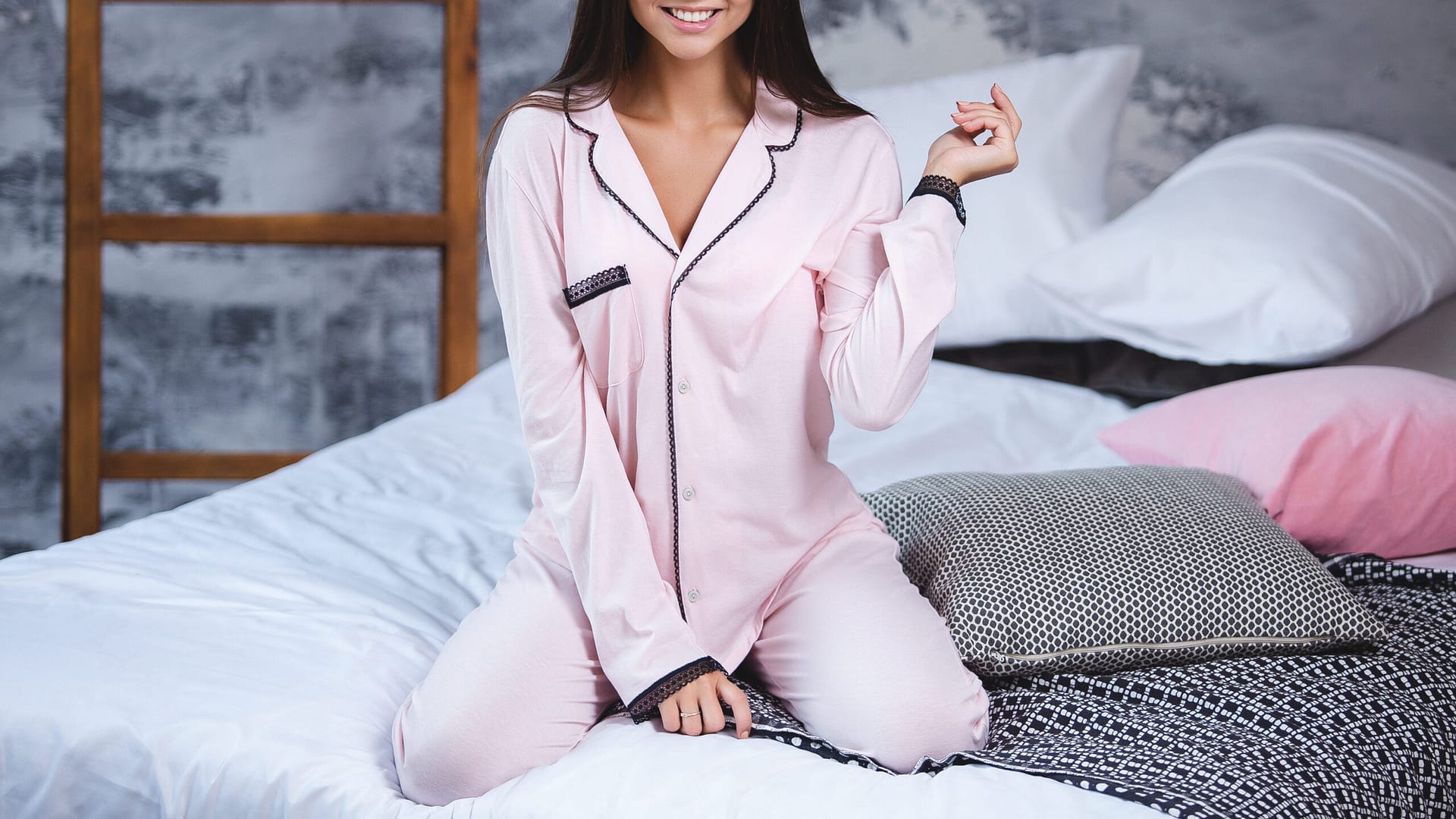The Ultimate Guide to Lining Fabric: Top 7 Types of Lining Fabrics For Your Garments
By Raymond Lau – Dec. 8, 2023
In the world of fashion and apparel manufacturing, the importance of lining fabric cannot be overstated. It’s not just a hidden layer within garments; it plays a crucial role in comfort, structure, and overall quality. This guide aims to enlighten brand owners, importers, wholesalers, and startup brands about the diverse world of lining fabrics. Whether you are a seasoned designer or just stepping into the vast universe of apparel manufacturing, understanding the nuances of lining fabrics can elevate your products to a new level of excellence.
What is Lining Fabric?
Lining fabric is a layer of material attached to the inside of a garment. It serves multiple purposes: improving the garment’s wearability, hiding seams and padding, and often contributing to the garment’s shape and structure. The choice of lining can affect a garment’s comfort, appearance, and even longevity. Originating centuries ago, lining fabrics have evolved from mere functional components to crucial elements that can define a garment’s quality and comfort. Today, with a wide range of materials available, choosing the right lining fabric has become an art in itself, integral to the fashion design process.
What Type of Garments Need Lining? Why?
Lining is essential in a variety of garments, each with its specific requirements and reasons. Formal and business wear, like suits and blazers, often need lining to give structure, improve drape, and ensure a clean finish by concealing internal seams. In the case of dresses and skirts, especially those made from transparent or lightweight fabrics, lining is vital for providing opacity and enhancing the garment’s shape. Outerwear, including jackets and coats, requires lining for additional warmth, comfort, and to protect the outer fabric from body oils and sweat, thereby extending the garment’s life. Essentially, lining is not just about aesthetics; it’s about enhancing the functionality, durability, and wearability of a garment, ensuring that it looks good, feels comfortable, and lasts longer.
Popular Types of Lining Fabric
Silk Lining
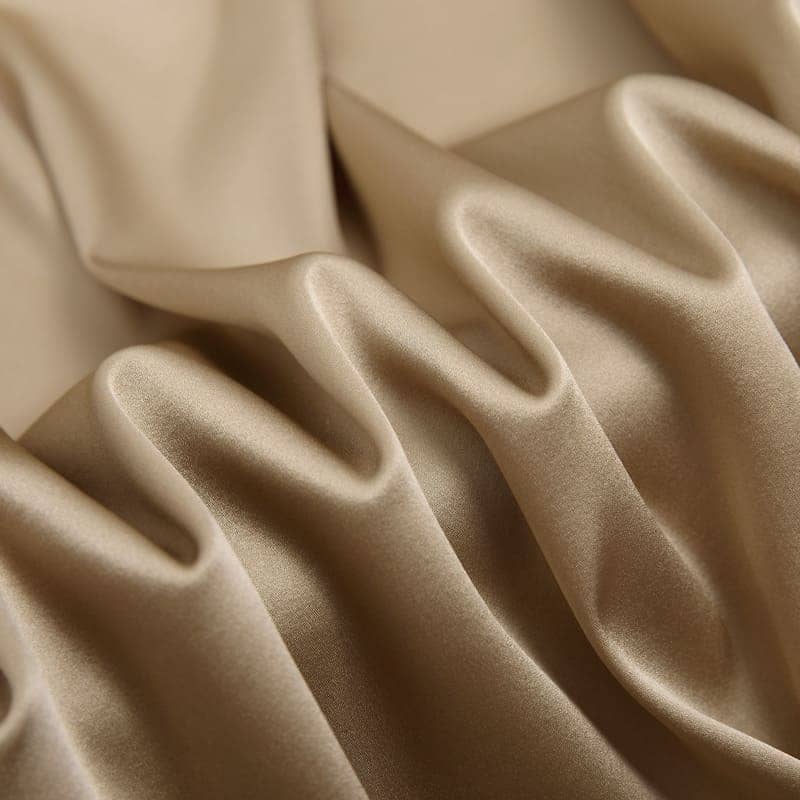
Silk has strong moisture absorption, reaching up to 30% when saturated, making its lining breathable and comfortable to wear, offering a cool and pleasant feeling. However, silk’s light resistance is inferior to cotton fibers, as sunlight can cause the fibers to become brittle and degrade. Continuous exposure to sunlight for 200 hours can reduce the strength by 50% and cause discoloration to a yellowish hue. Therefore, silk linings should be kept out of direct sunlight. Silk has good heat resistance; it can withstand being soaked in 80-degree Celsius hot water for 3 hours without becoming brittle, though it is slightly less heat resistant than cotton fibers. Silk is sensitive to alkalis, swelling and dissolving in alkaline solutions. It also has poor resistance to salts, so silk linings wetted by sweat should be immediately washed to prevent damage to the fabric and reduce its lifespan. Silk is renowned for its high luster, vivid colors, and soft, smooth texture with elasticity. Silk fabric is considered the finest among all fibers for its feel – lightweight, soft, smooth, and static-free, beneficial for human health.
Advantages of Silk Lining:
- High Moisture Absorption: Silk can absorb up to 30% of its weight in moisture, ensuring comfort in humid conditions.
- Breathability: The fabric’s breathability makes it cool and comfortable to wear.
- Heat Resistance: Silk can endure high temperatures, remaining stable in 80-degree Celsius hot water for 3 hours.
- Luxurious Appearance: Known for its high luster and vivid colors.
- Softness and Elasticity: Silk is prized for its soft, smooth texture and elasticity, making it comfortable against the skin.
- Health Benefits: Being lightweight, smooth, and static-free, silk is considered beneficial for human health.
Disadvantages of Silk Lining:
- Low Light Resistance: Silk is less resistant to sunlight than cotton fibers, leading to brittleness and discoloration with prolonged exposure.
- Sensitivity to Alkalis and Salts: Silk reacts negatively to alkalis and salts, which can cause the fabric to swell, dissolve, or degrade.
- Maintenance: Silk linings that become wet with sweat need immediate washing to prevent damage and maintain longevity, indicating a higher maintenance requirement.
- Durability Concerns: While silk is resistant to heat, it may not be as durable as cotton fibers in certain conditions.
Cotton Lining
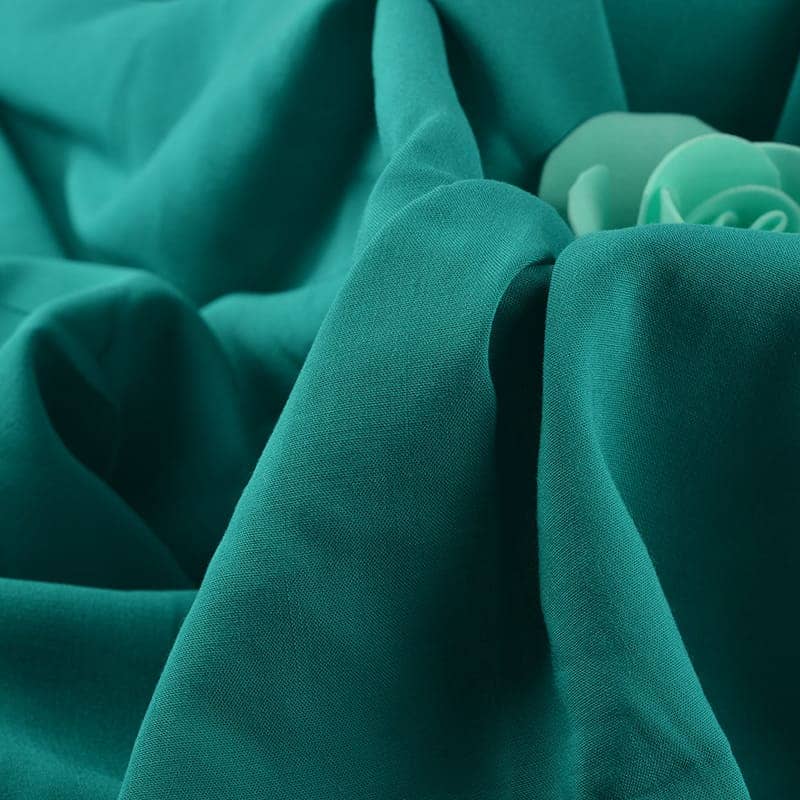
Cotton lining is a versatile and breathable option, often used in a variety of garments, from casual wear to more formal attire. The strength of cotton fabric primarily depends on the length and twist of the cotton fibers. The longer the fibers and the higher the twist count, the greater the strength, resulting in a fabric that is both durable and has good abrasion resistance. Cotton lining has better strength compared to artificial fiber linings but is inferior to synthetic fiber linings. Its elasticity is relatively poor, making it prone to wrinkling. However, it has good moisture absorption and breathability, making it soft and comfortable to wear. Cotton is also well-suited for clothing due to its good thermal insulation. It dyes well, offering bright colors and a complete color spectrum that can be easily matched with various fabric colors. It has good resistance to alkalis but poor resistance to acids, and it possesses decent heat and light resistance. Cotton is primarily used as lining material in cotton fabric garments.
Advantages of Cotton Lining:
- Strength and Durability: The strength of cotton lining is influenced by the length and twist of its fibers, contributing to its durability and abrasion resistance.
- Moisture Absorption and Breathability: Cotton lining is good at absorbing moisture and is breathable, enhancing comfort.
- Softness and Comfort: It is known for its softness, making it comfortable for wear.
- Thermal Insulation: Cotton provides good thermal insulation, making it suitable for clothing.
- Dyeing Properties: Exhibits excellent dyeing characteristics, allowing for bright, vivid colors and a wide range of hues that can match various fabrics.
- Alkali Resistance: It has a good resistance to alkalis, beneficial for certain fabric care processes.
Disadvantages of Cotton Lining
- Elasticity and Wrinkle Tendency: Cotton has lower elasticity and is prone to wrinkling, which can be a drawback in terms of maintenance and appearance.
- Comparative Strength: While strong, cotton lining is not as durable as synthetic fiber linings.
- Acid Sensitivity: Cotton is sensitive to acids, which can limit its use in certain environments or require more careful maintenance.
- Heat and Light Resistance: Though decent, its resistance to heat and light is not as high as some synthetic materials, which may affect its longevity and color retention over time.
Viscose Lining
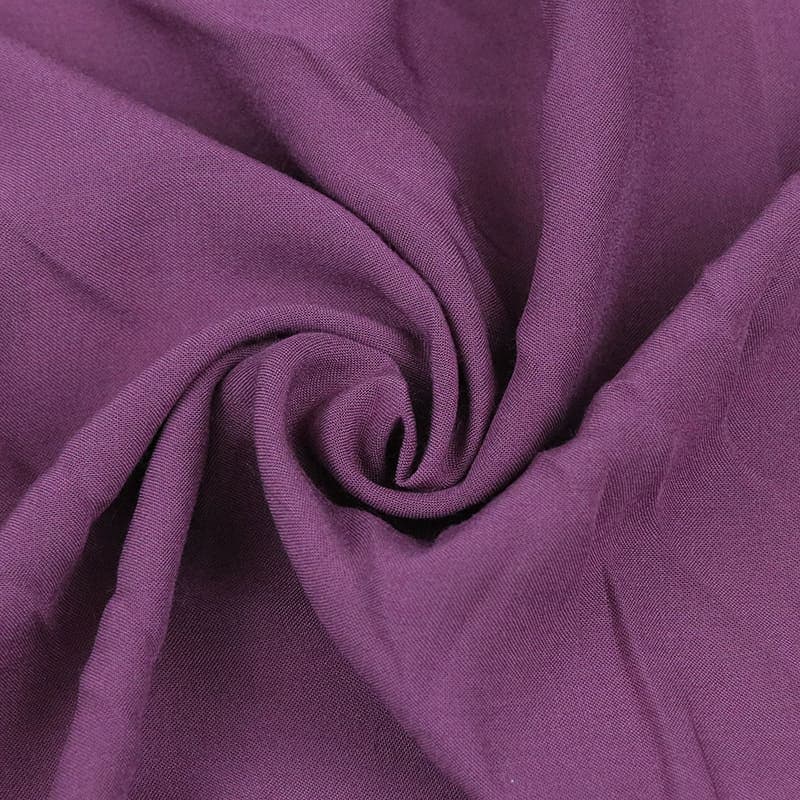
Viscose lining fabric is soft to the touch and comfortable to wear, offering the feel of cotton and the smoothness of silk. It is smoother and more comfortable than cotton fabric when worn. Viscose lining has good moisture absorption and breathability, superior to cotton in these aspects. It exhibits characteristics similar to cotton lining but with better moisture wicking and breathability. The dyeing properties of viscose are better than cotton, allowing for easier coloring with vibrant hues, a full color spectrum, and good luster. However, its elasticity and ability to recover its shape are poor, leading to wrinkles and a lack of crispness during wear, and it has poor dimensional stability. Viscose lining is primarily used in woolen garments and thick woolen suits.
Advantages of Viscose Lining:
- Comfort and Softness: Viscose lining is soft and comfortable, similar to cotton in feel and silk in smoothness.
- Moisture Absorption and Breathability: It has superior moisture absorption and breathability compared to cotton, enhancing comfort and wearability.
- Dyeing Properties: Viscose is easy to dye, achieving bright and vivid colors with a full spectrum and good luster.
- Smoothness: It offers a smoother feel than cotton when worn, contributing to its comfort.
Disadvantages of Viscose Lining:
- Low Elasticity and Shape Recovery: Viscose lining has poor elasticity and does not recover its shape well, which can lead to wrinkles and a lack of crispness.
- Dimensional Stability: It has poor dimensional stability, meaning it may not retain its original size and shape after wear or washing.
- Maintenance: Due to its tendency to wrinkle and lack of shape retention, viscose lining may require more careful maintenance.
Copper Rayon Lining
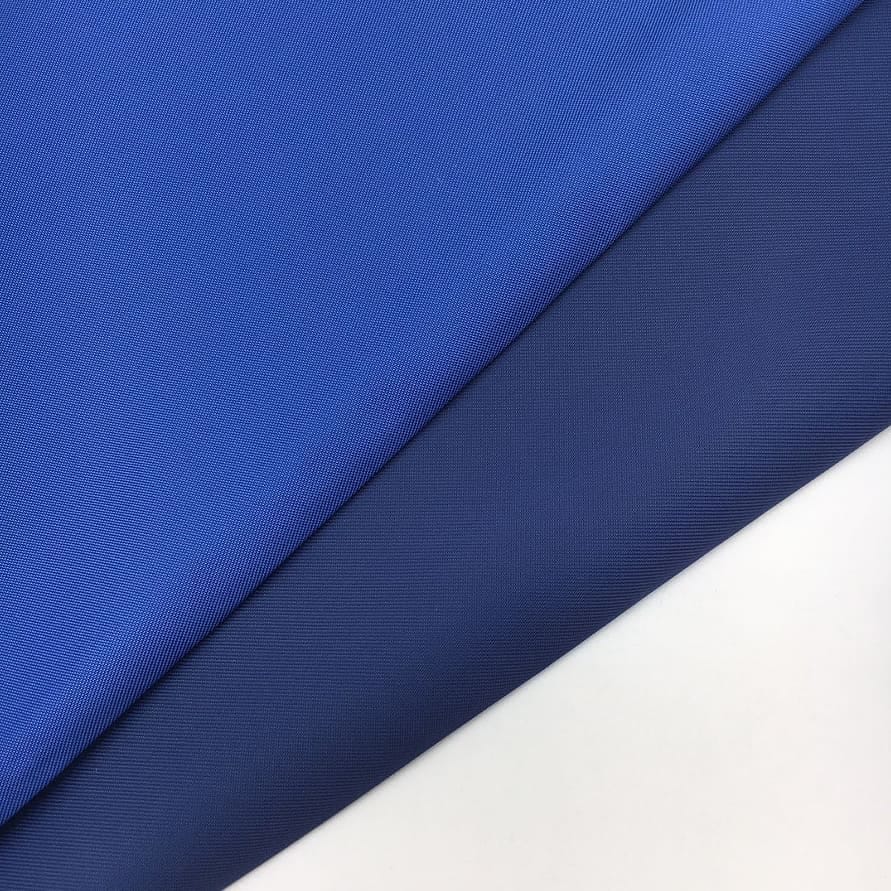
Copper rayon lining, a variety recently developed, is widely used for linings due to its resemblance to real silk fibers in terms of softness, gentle luster, and good breathability. It is primarily used as lining for luxury leather, evening dresses, and other high-end garments.
Advantages of Copper Rayon Lining:
- Softness: Copper rayon is notable for its soft feel, similar to that of real silk fibers.
- Gentle Luster: It has a gentle and appealing luster, adding to the aesthetic quality of the garments.
- Breathability: Good breathability makes it comfortable for wear, especially in warm conditions.
- Suitability for High-End Garments: Its properties make it an ideal choice for lining luxury leather goods, evening dresses, and other upscale clothing.
Acetate Lining
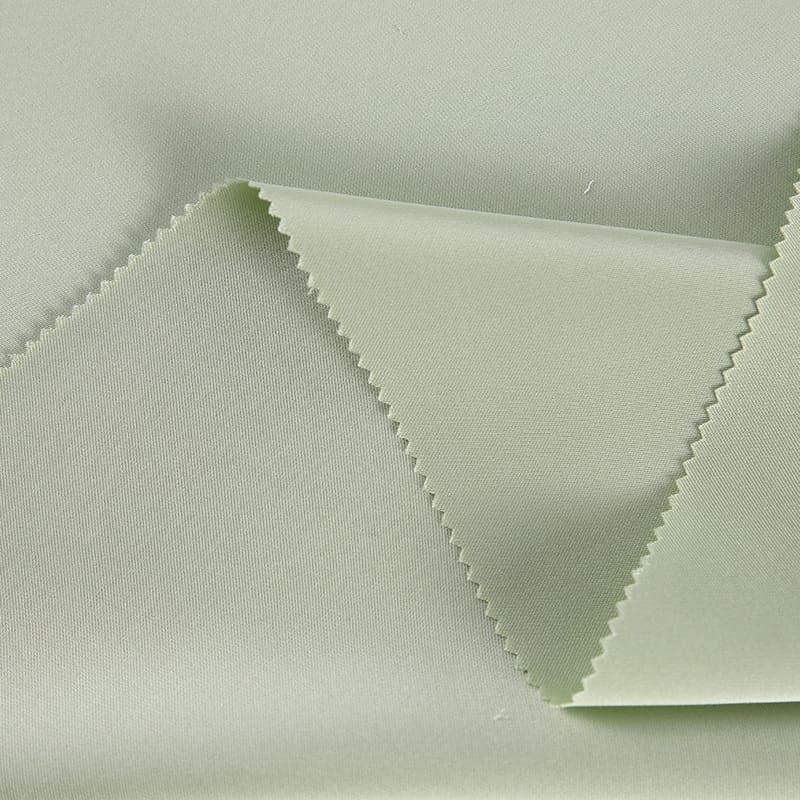
Acetate lining is known for its silky texture and glossy appearance, often used in formal wear and luxury garments. It’s a synthetic fiber that offers a smooth touch against the skin, enhancing the garment’s comfort and appeal. Acetate is particularly good at holding dyes, resulting in vibrant and lasting colors. It’s also hypoallergenic, making it suitable for sensitive skin. However, acetate can be less breathable than natural fibers and may retain heat, making it less ideal for very warm climates. It also requires gentle care, as it can be prone to shrinking and damage if exposed to high temperatures. Despite these considerations, acetate remains a popular choice for lining high-end apparel due to its elegant finish and drape.
Advantages of Acetate Lining:
- Luxurious feel: Acetate’s soft, smooth texture provides a luxurious feel against the skin, making it ideal for dresses, jackets, and other high-end garments.
- Excellent drape: Acetate drapes beautifully, creating fluid and elegant lines in garments. This is especially beneficial for flowy dresses, skirts, and drapes.
- Vibrant colors: Acetate readily takes dyes, allowing for a wide range of vibrant and lasting colors. This makes it perfect for adding a pop of color to any garment.
- Wrinkle-resistant: Acetate is naturally wrinkle-resistant, maintaining its smooth appearance even after being worn or stored for extended periods.
- Lightweight: Acetate is a lightweight material that adds minimal bulk to garments, making it comfortable to wear.
- Durable: Acetate is relatively durable when handled with proper care.
Disadvantages of Acetate Lining:
- High heat sensitivity: Acetate is highly sensitive to heat and can easily melt or shrink when exposed to high temperatures. This means it requires special care when ironing or dry cleaning.
- Hand wash only: Due to its delicate nature, acetate is not recommended for machine washing and should be hand washed instead.
- Static cling: Acetate can be prone to static cling, particularly in dry environments. Anti-static sprays can help mitigate this issue.
- Expensive: Compared to other lining materials like cotton or polyester, acetate is generally more expensive.
- Poor moisture absorption: Acetate does not absorb moisture well, which can make it feel clammy in hot and humid weather.
Polyester Lining
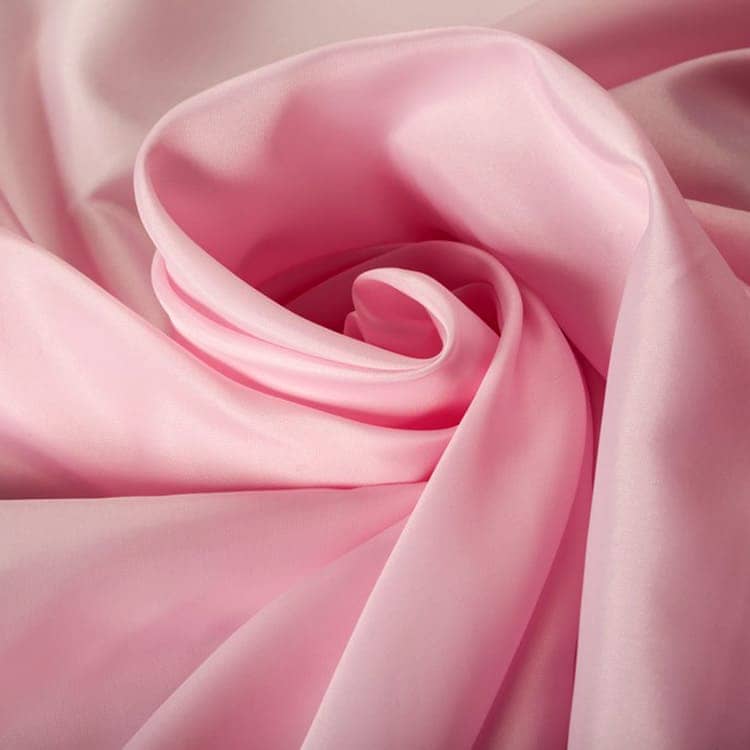
Polyester lining has excellent elasticity, the highest among all fibers, making it wrinkle-resistant, crisp, and dimensionally stable with good shape retention. Its strength and abrasion resistance are second only to nylon lining, making it durable and less prone to wear. However, polyester has poor moisture absorption, but it is easy to wash and quick to dry. Despite this, its poor breathability can make it uncomfortable to wear in hot conditions. Additionally, it tends to generate static electricity, attract dust, and is prone to pilling. Its melting point is at 260°C, and it can be ironed at temperatures up to 180°C. Polyester is resistant to microbes, mothproof, and resistant to mold, making it easy to store. It is mainly used as lining in men’s and women’s fashion and casual wear.
Advantages of Polyester Lining:
- Excellent Elasticity and Wrinkle Resistance: Polyester lining is highly elastic and resistant to wrinkles, maintaining a crisp appearance.
- Dimensional Stability and Shape Retention: It maintains its shape well and is dimensionally stable.
- Strength and Abrasion Resistance: Its strength and abrasion resistance are high, second only to nylon.
- Easy to Wash and Quick to Dry: Polyester dries quickly and is easy to maintain.
- High Melting Point: With a melting point of 260°C, it can withstand higher ironing temperatures up to 180°C.
- Resistance to Microbes: It is resistant to microbial growth, mothproof, and mold-resistant, which aids in its preservation and storage.
- Versatility: Commonly used in both men’s and women’s fashion and casual wear.
Disadvantages of Polyester Lining:
- Poor Moisture Absorption and Breathability: This can lead to discomfort in hot conditions due to its lack of breathability.
- Static Electricity and Dust Attraction: Polyester is prone to static electricity, which can attract dust and lead to pilling.
- Potential for Discomfort: Its poor breathability can make it feel hot and less comfortable to wear, especially in warmer climates.
Nylon Lining
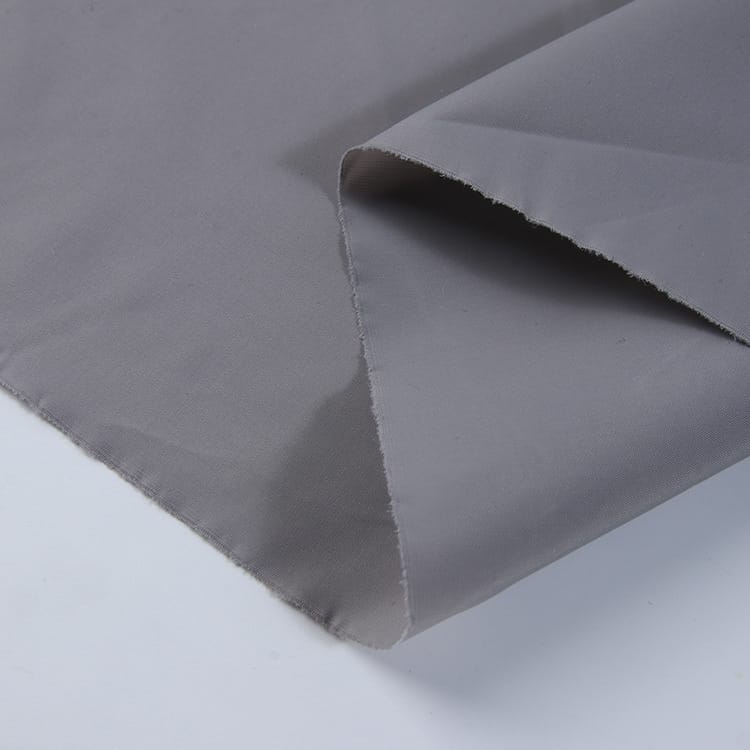
Nylon lining is known for its excellent abrasion resistance, the highest among all fibers. Its abrasion resistance is 10 times that of cotton fibers, 10 times that of dry viscose fibers, and 140 times that of wet viscose fibers. The fabric feels good to the touch, has high elongation, good elastic recovery, and some wrinkle resistance, but it lacks shape retention and doesn’t have the crispness of polyester, making it prone to deformation. Nylon lining has poor ventilation and breathability and is prone to static electricity. It offers good resistance to moths and corrosion. However, its resistance to heat and light is relatively poor, and ironing temperatures should be controlled below 140 degrees Celsius. Nylon lining is mainly used in mountaineering wear, sportswear, women’s clothing, and other apparel linings.
Advantages of Nylon Lining:
- Exceptional Abrasion Resistance: Nylon lining has the highest abrasion resistance among all fibers, significantly surpassing cotton and viscose.
- Good Hand Feel and Elasticity: The fabric is pleasant to the touch, has high elongation, and good elastic recovery.
- Wrinkle Resistance: It has a degree of wrinkle resistance, contributing to the garment’s appearance.
- Moth and Corrosion Resistance: Nylon is resistant to moths and corrosion, enhancing its durability.
- Versatility in Use: It is commonly used in various types of clothing, including mountaineering wear, sportswear, and women’s apparel.
Disadvantages of Nylon Lining:
- Poor Shape Retention: Nylon lacks the crispness of fabrics like polyester and is prone to deformation.
- Poor Ventilation and Breathability: Its ventilation and breathability are inferior, which may affect comfort.
- Static Electricity: Nylon is prone to generating static electricity, which can be a nuisance in certain environments.
- Heat and Light Sensitivity: It has low resistance to heat and light, requiring careful handling when ironing and exposure to sunlight.
Choosing the Right Lining Fabric
Selecting the appropriate lining fabric is a critical decision in the garment-making process, as it significantly influences the final product’s durability, comfort, and aesthetic. Key factors to consider include the lining’s durability, which affects the garment’s longevity, and its comfort level, particularly in terms of breathability and skin-friendliness. It’s also essential to match the lining fabric with the outer garment material in terms of weight, stretch, and texture to ensure a harmonious drape and appearance. For instance, silk or satin linings are often paired with luxury formal wear for their elegant finish, while cotton or polyester linings are more suitable for casual clothing due to their durability and ease of care. When designing outerwear, consider linings that provide additional insulation or weather resistance. Understanding these dynamics enables designers to make informed choices that enhance the functionality and appeal of their apparel, ensuring customer satisfaction and garment longevity.
Frequently Asked Questions (FAQs)
1. What is the purpose of lining fabric in a garment?
- Answer: Lining fabric serves several purposes: it helps the garment maintain its shape, provides a smooth finish to hide seams and internal construction, improves wearability, and can add an extra layer for warmth or comfort.
2. How do I choose the right lining fabric for my garment?
- Answer: Consider the type of outer fabric, the desired comfort level, the garment’s purpose, and the care requirements. The lining should complement the outer material in terms of weight and drape and should meet the wearer’s needs in terms of breathability and skin sensitivity.
3. Can I machine wash garments with a lining?
- Answer: This depends on the type of lining fabric. Polyester and cotton linings are often machine washable, but silk, satin, and acetate may require dry cleaning. Always check the care label for specific instructions.
4. Are there eco-friendly lining fabric options?
- Answer: Yes, there are sustainable lining options such as those made from organic cotton, recycled polyester, and other eco-friendly materials. These are becoming more popular as the fashion industry moves towards sustainability.
5. What is the best lining fabric for formal wear?
- Answer: Silk and satin linings are popular choices for formal wear due to their luxurious feel and elegant appearance. They provide a smooth surface that allows the outer fabric to drape beautifully.
6. How do I match lining fabric with the outer garment material?
- Answer: Match the lining fabric to the weight and stretch of the outer material. For example, use a heavier lining for thicker outer fabrics and a more flexible lining for stretchy materials.
7. What are some innovative trends in lining fabrics?
- Answer: Innovations include technical linings like thermal, moisture-wicking, and water-resistant materials, as well as smart linings that can regulate temperature or incorporate wearable technology.
8. Is it important to consider breathability in lining fabrics?
- Answer: Yes, breathability is important, especially for comfort in warmer climates or active wear. Natural fibers like cotton and silk offer more breathability than most synthetic fibers.
9. How does lining fabric impact the overall style of a garment?
- Answer: Beyond its functional aspects, lining fabric can add aesthetic value. A contrasting color or pattern can add an element of surprise, while a luxurious lining material can elevate the garment’s overall feel.
Conclusion
In summary, understanding the various types of lining fabrics and their applications is key to creating high-quality apparel. From enhancing the structure and comfort of a garment to ensuring its durability and aesthetic appeal, the right lining can make a significant difference. Whether you’re designing formal wear, casual clothing, or specialized outerwear, the choice of lining fabric should be made with careful consideration of the garment’s purpose and the wearer’s needs. For those interested in exploring a wide range of quality apparel options, including garments with expertly chosen lining fabrics, be sure to visit Valtin Apparel. Our commitment to quality, combined with our expertise in selecting the perfect lining materials, ensures that every piece we produce meets the highest standards of excellence. Discover how the right lining can elevate your apparel designs and enhance the overall user experience with Valtin Apparel.

